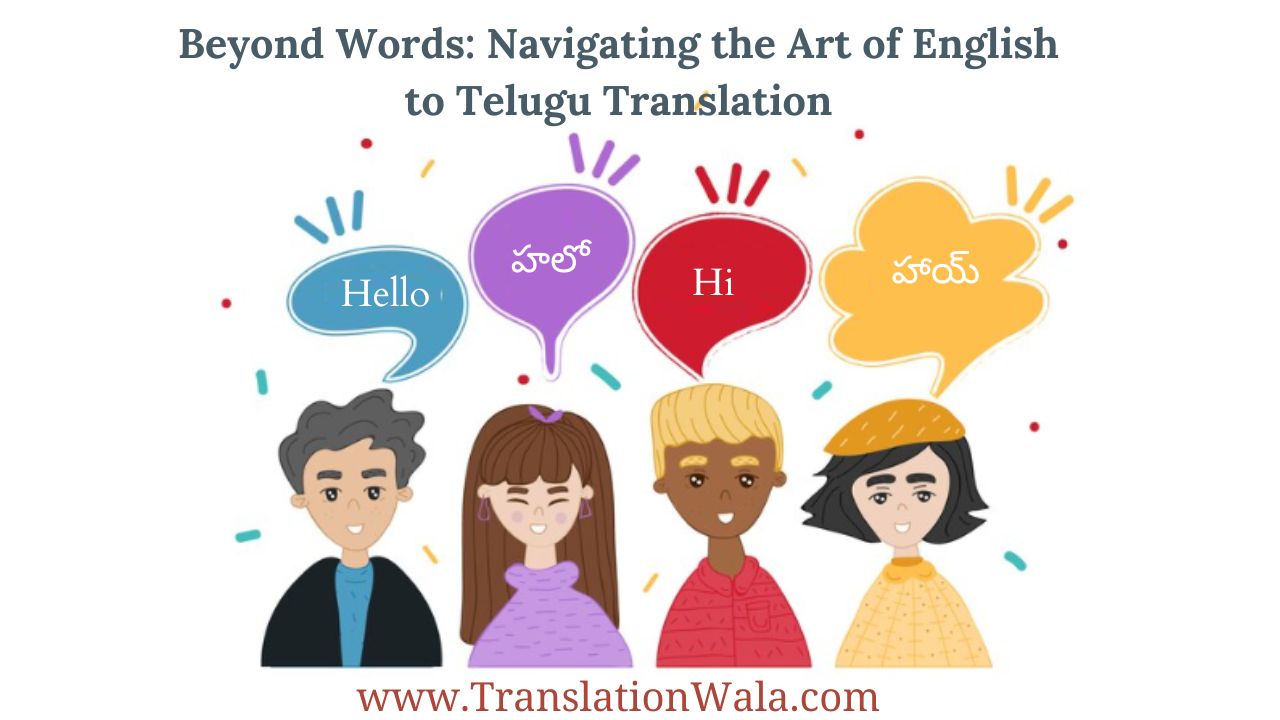English to Telugu Translation is more than just replacing words. To get to the heart of a message and add the cultural details of Telugu, it’s like a sensitive dance between languages. It’s an art form that takes more than just technical skill. You have to really understand what each language means at its core.
Telugu is a Dravidian language that more than 80 million people speak around the world. It has a rich literature history and a unique cultural character. English is a world language with its own words and phrases. This makes it hard for translators to work with. To get around this complicated environment, you need to use more than one strategy.
Understanding the Depths of Context:
The first and most important step is to fully understand the main text. This is more than just understanding what each word means in its direct sense. A good translation looks into the background, the tone, and the people who will be reading the text. Is it a serious business paper or a funny poem? Is it a how-to guide or an argumentative essay? To choose the best Telugu counterpart, it’s important to know what the goal and viewers are.
Also Read: Bridge Cultures: Navigate with Expert English to Kannada Translation
Cultural Nuances: Wordplay and Beyond:
There are a lot of words, metaphors, and cultural references in English that might not have a clear Telugu version. When translating, a good speaker doesn’t make the mistake of translating words for words. It is very important to find a Telugu phrase that says the same thing, even if the words are different.
Finding the Telugu words for “cats and dogs” wouldn’t be needed to translate the phrase “raining cats and dogs.” It’s possible for a translation to use the Telugu saying “ఆగాిం పగిలిపోతుంది” (Aakashaam Pagilipotundi), which means “the sky is breaking” and means “heavy rain.”
Faithfulness to the Source vs. Readability in Telugu:
There is a constant battle between keeping true to the original text and making sure that the translated version flows well in Telugu. It’s important to stay true to the main idea, but the translated text shouldn’t sound forced or off.
With skill, a translator can find a middle ground between these two forces. In Telugu, they might change the order of words to make them flow better or use synonyms that mean the same thing but sound more natural. This makes sure that the translated text hits home with Telugu speakers without changing what the original text is about.
The Nuances of Language Register:
It is very important that the amount of politeness in the source text is carefully kept in the translation. A different record is needed to translate a formal document than to translate a children’s book. A good translation knows a lot about both the English and Telugu forms, so they can make sure that the translated text stays at the right level of politeness.
Technology as a Tool, Not a Crutch:
Even though machine translation tools are getting better, they shouldn’t be used instead of people. These tools can be very helpful because they can offer versions and show you where mistakes might be. But the human speaker makes the final decision about the best way to say things and how to handle culture differences.
Also Read: Precision in Every Phrase: Excelling at English to Bengali Translation
The Art of Research: A Translator’s Lifelong Pursuit:
Language is a field that is always changing. As time goes on, new words and cultural meanings appear. A good translator is someone who is always learning new things. They study new words, keep up with current events, and immerse themselves in both English and Telugu society. Because they are so dedicated, their versions are always correct, up-to-date, and respectful of other cultures.
Beyond Words: The Impact of Translation:
English to Telugu Translation is an important part of communicating. It helps people share ideas, information, and details about their culture. It is the job of translators to make sure that more people can read everything from scientific studies to works of literature. People from different countries can get along better and work together better because of this.
In conclusion
It’s not enough to be able to read and write from English to Telugu. To be good at this art form, you need to know a lot about both languages and their cultures. You also need to know how to find the best balance between staying true to the original and making it easy to read. This is because good communication is becoming more and more important in the world. Skilled translators help people from different countries meet and understand each other. They are able to do this because they learn a lot, pay attention to details, and love language.
